How to Write Dark Fantasy. From Fantasy Story Ideas to Publishing Wide
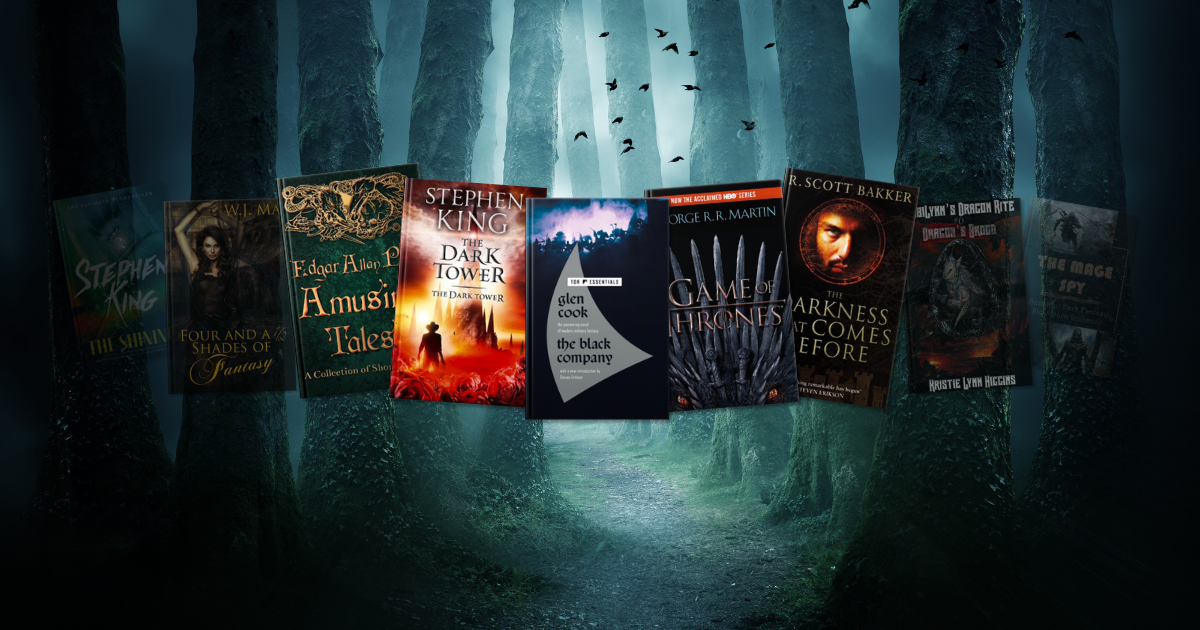
Dark fantasy novels take readers into shadowy realms where the unimaginable lurks. They blend the familiar with the uncanny, making our heartbeats quicken.
If you've ever wondered how to write a dark fantasy that captivates and chills, you're not alone. Delving deep into the macabre and the mysterious, crafting such tales is as enthralling as the stories themselves.
Let this guide illuminate your path to the heart of the dark fantasy genre.
I go over:
Why Dark Fantasy?
Understanding your categories is crucial, especially when you launch and market your book. As a significant part of your book’s metadata, choosing the right category helps you rank higher in search results. Ultimately, it helps the right audience find you.
The mega genre fantasy is not only gigantic in how much money it makes (which is a TON) but also in how many subgenres it holds. Overall, there are around 4,000 categories that most stores use (called BISAC). It’s good to have pointers on how to differentiate your content.
About being a money-maker, Fantasy saw a 26,5 raise from 2022 to 2023. It’s a fruitful space for digital self-publishing and even better if you’re a YA writer. Young people love fantasy AND horror; dark fantasy is a sweet spot.
Dark Fantasy Writing: Know Your Genre
Deciphering dark fantasy can get confusing, especially when distinguishing it from its close cousin, horror. How does it diverge from traditional fantasy? Let's uncover nuances and provide tips on how to start a fantasy book that genuinely captivates the essence of dark fantasy.
Dark fantasy books vs. horror books
Dark fantasy is primarily fantasy-based. You may have your typical worldbuilding with elves and goblins or a modern setting with magical frills. When sprinkled with horror and darker motifs of life, it becomes its own avenue. There are crossovers, however, such as horror stories with supernatural traits. A good example is Stephen King’s The Shining.
To determine if your story is dark fantasy or straight-up horror, try asking yourself the following: Does the ending exclusively evoke dread and apprehension? Then it’s likely horror. If there’s a glimmer of hope, it’s more aligned with fantasy.
This subgenre is about the way it’s portrayed. Are there grotesque descriptions of fantastical creatures? Is there suspense and thrill, like horror?
Elements of a dark fantasy book
The dark fantasy setting is crucial in establishing the tone and atmosphere. Here are some main elements to get you inspired
1. Gothic atmosphere
Dark fantasy settings often have a gothic or eerie ambiance, featuring haunted forests, decrepit castles, ancient ruins, and misty graveyards.
These settings might contain powerful artifacts or relics with dark secrets or tremendous power, often with a perilous cost for those seeking them.
2. Twisted reality
The line between the real world and the supernatural or magical is often blurred, making it hard to distinguish between what's real and what's imagined or magical. While magic exists, it often comes at a price.
Dark fantasy settings feature magic that can be as dangerous to the wielder as to the target, and its use might have serious repercussions.
Mythical beasts, undead creatures, and other horrors roam the world, serving as both physical threats and symbolic manifestations of the world's darkness.
3. Morally ambiguous characters
The setting is populated by characters that don't easily fit into the standard "good" or "evil" mold. They may have complex motivations and allegiances, making the world unpredictable.
The dark fantasy setting often poses complex moral and ethical challenges for its inhabitants, forcing them to make tough choices that don't always have clear right or wrong answers.
4. Dystopian societies
The political or social structures in dark fantasy settings can be corrupt, oppressive, or in decline, reflecting the darker aspects of human society. There are signs of decay, whether moral, physical, or environmental. This could manifest as a dying land, fading magic, or societal decay.
5. Cursed landscapes
The land itself can be cursed or tainted somehow, whether by dark magic, ancient events, or malevolent entities. Natural events, like storms, can be more violent, unpredictable, or even sentient, further emphasizing the world's dangerous nature.
Resources to Help You Write Dark Fantasy
As a writer of this genre, think of your intent. The kind of intent that doesn’t promise a happy ending. The Grimm Brothers are a perfect example of what dark fantasy is all about if you go beyond the classic Disney animated tales.
Look at the experts as your main resource for creating an extraordinary story. Delve into the works of various dark fantasy writers and learn how it’s done:
-
George RR Martin, A Song of Ice and Fire
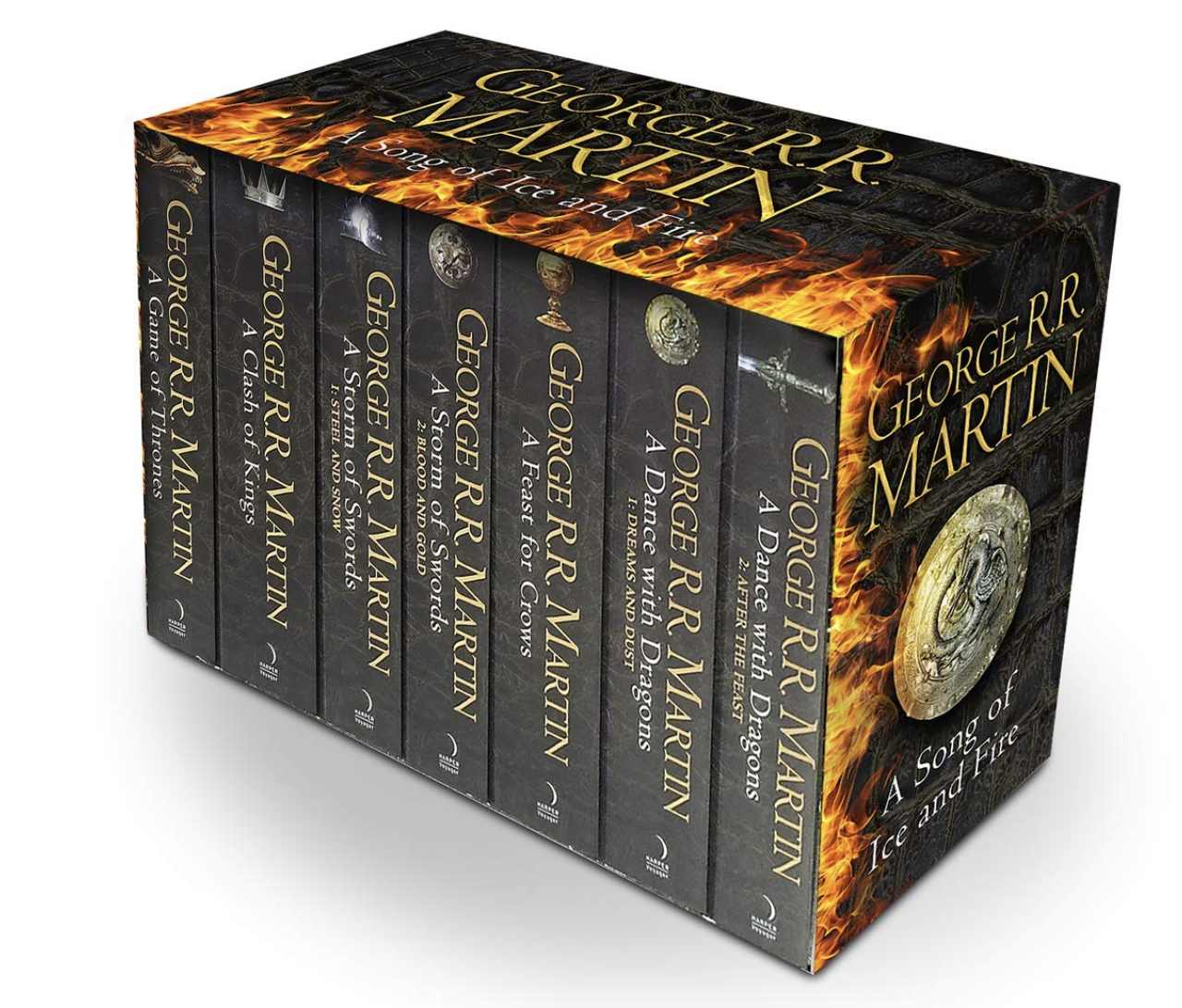
Image source
This is your modern-day dark fantasy icon. Fundamentally fantasy, with dragons and prophecies, the series deals with warped characters, terrible plagues, and harsh themes of life.
-
R. Scott Bakker, The Prince of Nothing
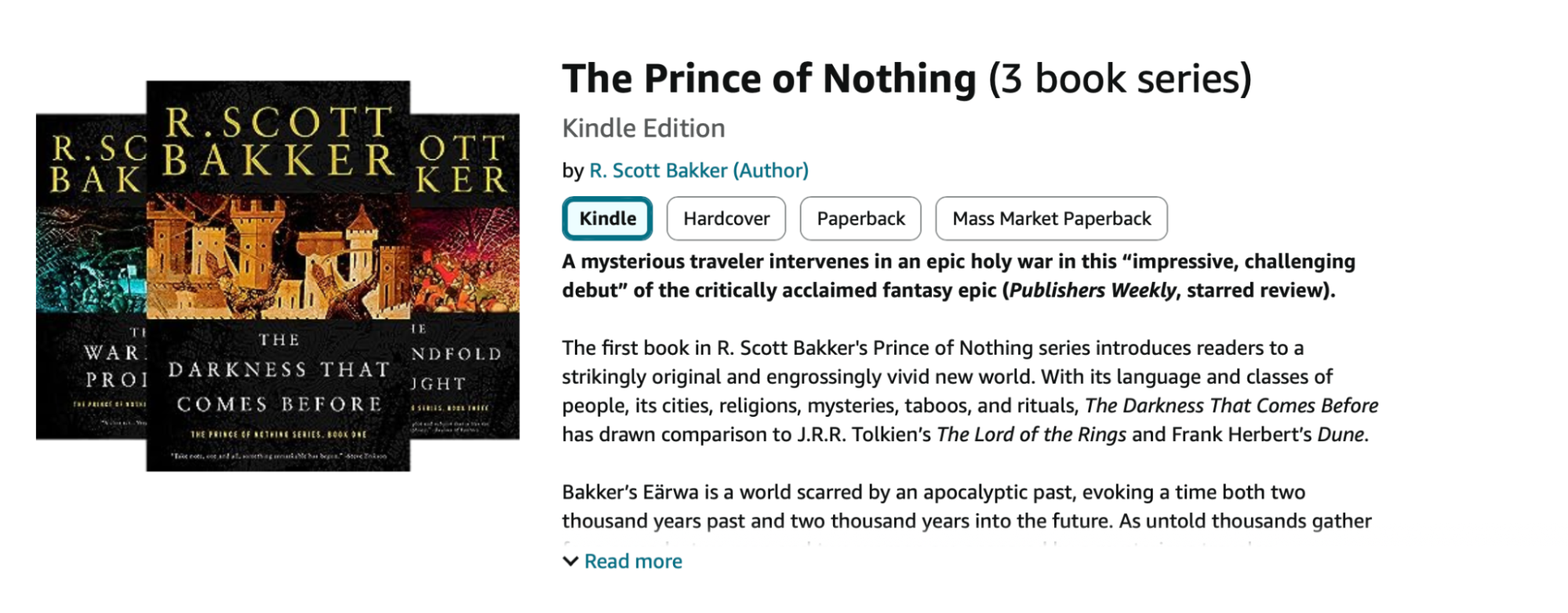
If you want dark, go for this trilogy. It’s got epic fantasy battles with sociopathic prophets. It debates religion and ethics. And it uses interchangeability among the characters: “Who’s REALLY the bad guy here?”
-
Short stories by Edgar Allen Poe
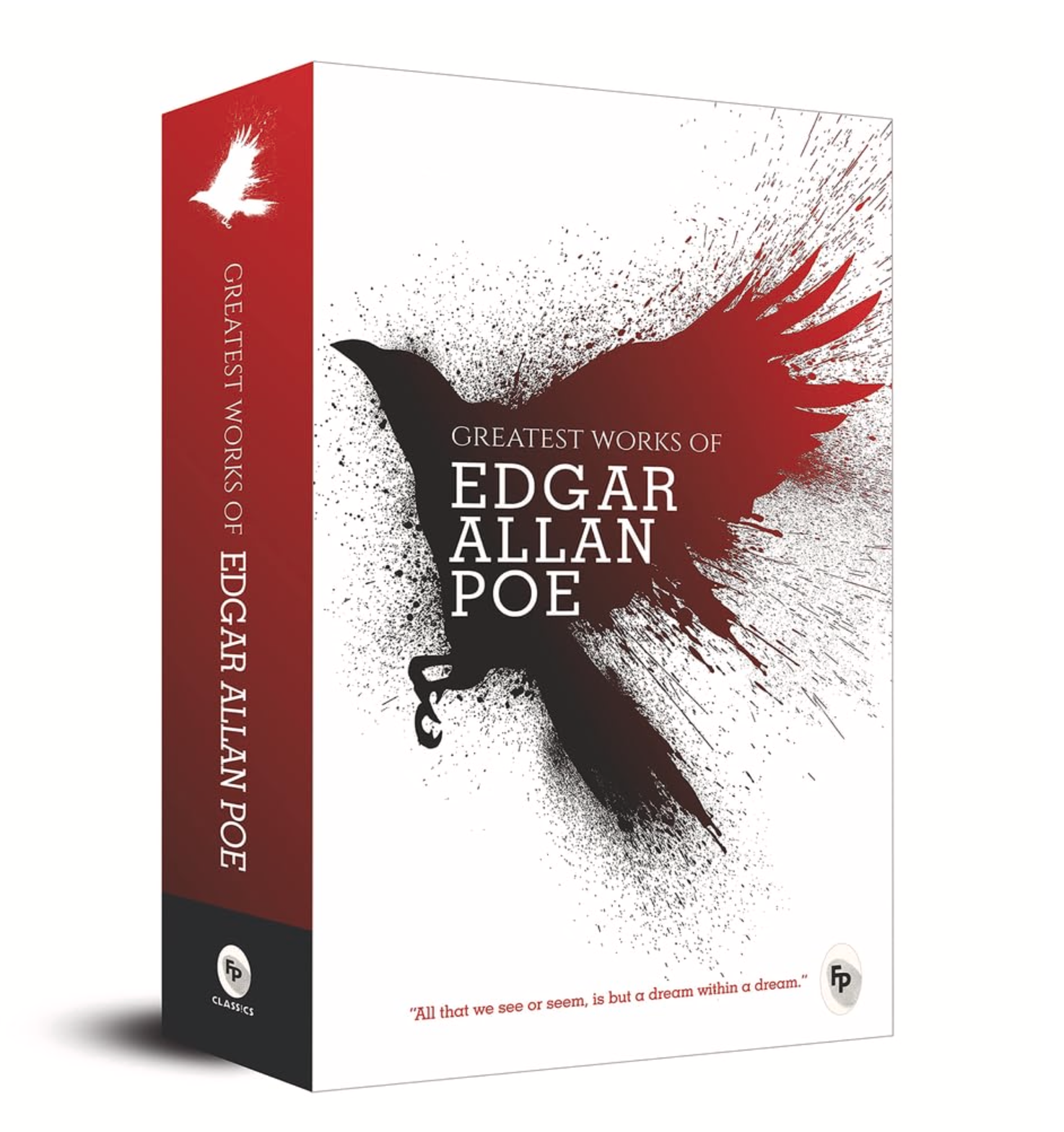
Edgar Allen Poe is an author renowned for horror, mystery, and fantasy. You can read his entire collection of short stories and understand what dark writing should achieve. His stories set in fantasy realms include The Haunted Palace and The Conqueror Worm, some of the best dark fantasy short stories written to date.
-
Glen Cook, Chronicles of The Black Company
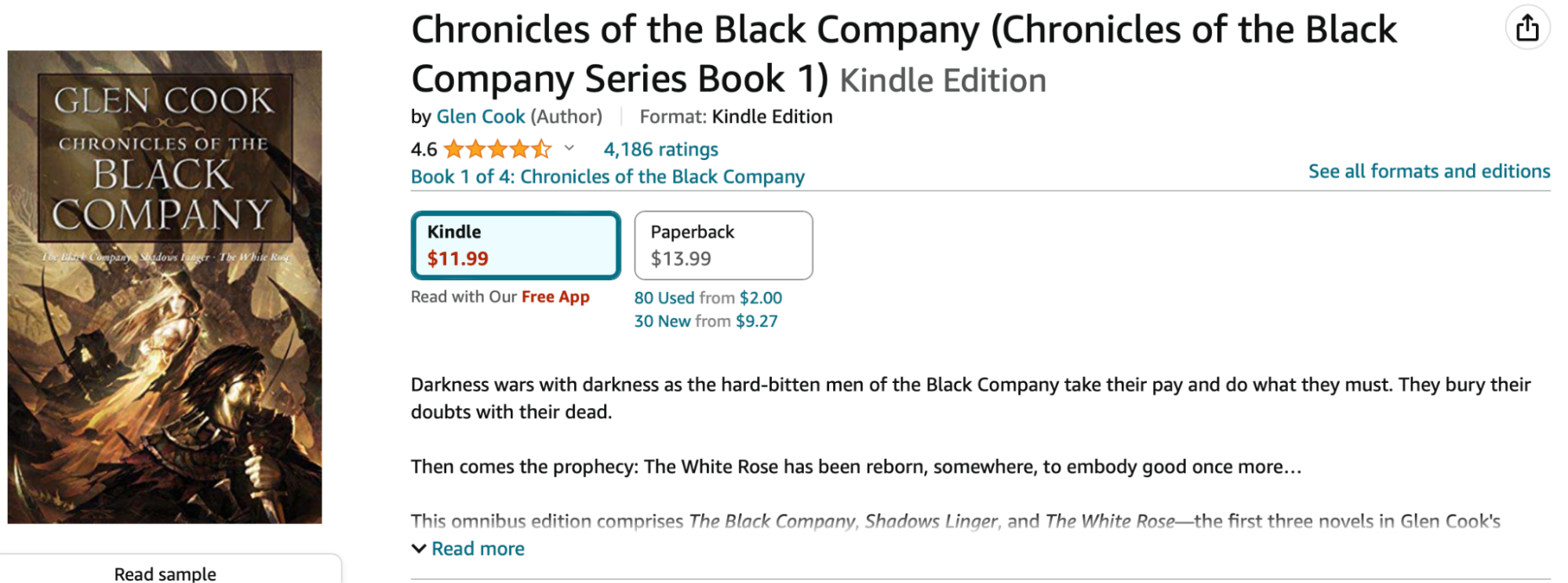
This gritty series is highly influential in today’s dark fantasy sphere and is considered the father of other modern works of dark fantasy.
-
P.S. Malcolm Starfall, Starlight

From one of PublishDrive’s own indie authors, this one is a YA dark fantasy drama with a hint of romance.
If you are looking for additional resources for inspiration and guidance, check our suggestions below:
- Read It’s Alive: Bringing Your Nightmares to Life by F. Paul Wilson, Clive Barker, and 40 more authors well-versed in dark writing.
- Get general writing advice from Brandan Sanderson’s free video courses. Here’s one about writing fantasy.
- Join online forums like Reddit’s fantasy writer group for support. This particular group is for receiving writing critiques (warning: they will sting your emotions but make you a better writer).
- Try out dark fantasy writing prompts.
- Look into history to draw parallels from real life. This is the same technique George RR Martin used, drawing inspiration from the 1400s Wars of the Roses to write A Song of Ice and Fire.
Lastly, sift for personal inspiration. Where does your mind wander?
Tips To Publish And Promote Your Dark Fantasy Novel
Completing your manuscript is the first step. Now, it is time to decide if you plan to take the traditional route and look for a literary agent or a publisher accepting submissions.
If you value creative freedom, then self-publishing is the route for you. If you are still wondering, read more about traditional publishing vs. self-publishing or vanity press.
Here’s what comes next.
1. Prepare your manuscript for publication
Consider the advantages of using a subscription-based aggregator like PublishDrive.
This option simplifies your process and helps you reach a wider audience. All authors need to do is create an account and follow the steps below:
- Head to My Books in the dashboard, choose to upload a new title, select the format, and fill in the relevant information.
- Upload your book’s files.
- Fill out the creators' names.
- Fill out the metadata to connect the book to prospective readers. There are tips for writing descriptions that excite your reader; you should consider them before writing the text.
- Set the book’s price.
- Define your rights and set a publication date. Here, you can set pre-orders.
- Select your stores. Click Enable for each store you want to distribute your book.
- You are now ready to click the Publish button.
Note: After publishing, once authors earn royalties, they will start seeing those payouts after two months (although it could be longer, depending on the reporting and payment cycles of the different stores.)
There is an array of special services to be discovered and used in the PublishDrive platform, such as royalty splitting and the POD cover template generator.
Once you have decided self-publishing is your path, you can read a few self-publishing guides to help you with publishing and promoting your books:
- How Much Does it Cost to Publish a Book in 2023?
- How to Create a Book Marketing Plan?
- Email Marketing for Authors
- How Do You Advertise a Book?
Promote your dark fantasy book with PublishDrive
When you choose to self-publish, you also become a marketer, so you must tap into a few marketing tactics.
PublishDrive has built-in tools to elevate your book's visibility in the market. Head to the Promotions tab from the dashboard and choose the ones you want.
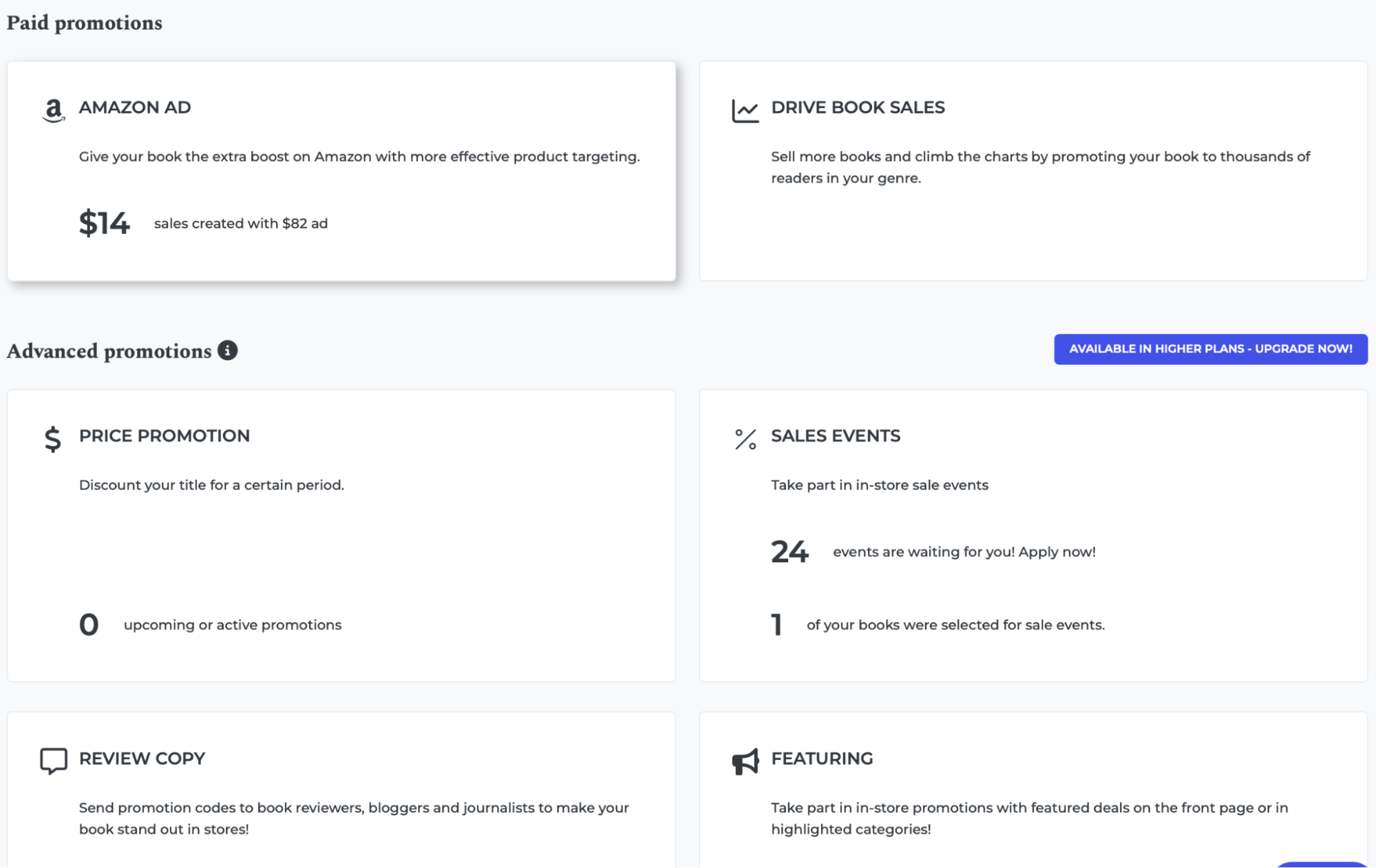
Here's what to look for:
1. Amazon advertising: Ensure your book gets noticed by shoppers on Amazon, targeting those actively searching or browsing products.
2. Book promotion via Written Word Media:
- Freebooksy: Ideal for permanently free books or available for a limited-time offer.
- Bargain Booksy: Targeted for books priced below $4.99.
- Red Feather Romance: Perfect for romance novels.
- NewInBooks: For titles released in the past 60 days.
3. Price promotion: Start a sale promotion for your book in the stores you've opted for during publishing.
4. Review copies: PublishDrive provides promotional review ebooks in leading stores like Apple Books and Google Play Books. These review copies are protected, ensuring they are available for 28 days and cannot be shared or copied beyond the designated recipient.
5. Sales events: Authors can apply for various sales events via PublishDrive.
6. Book featuring: PublishDrive recommends titles to retailers and editorial teams, who then select titles to be featured in special categories or topic areas, such as New Releases, SF Picks, or Editor’s Choice.
Understand your sales
With the Sales Analytics feature from PublishDrive, you can understand the market and your ebooks' performance.
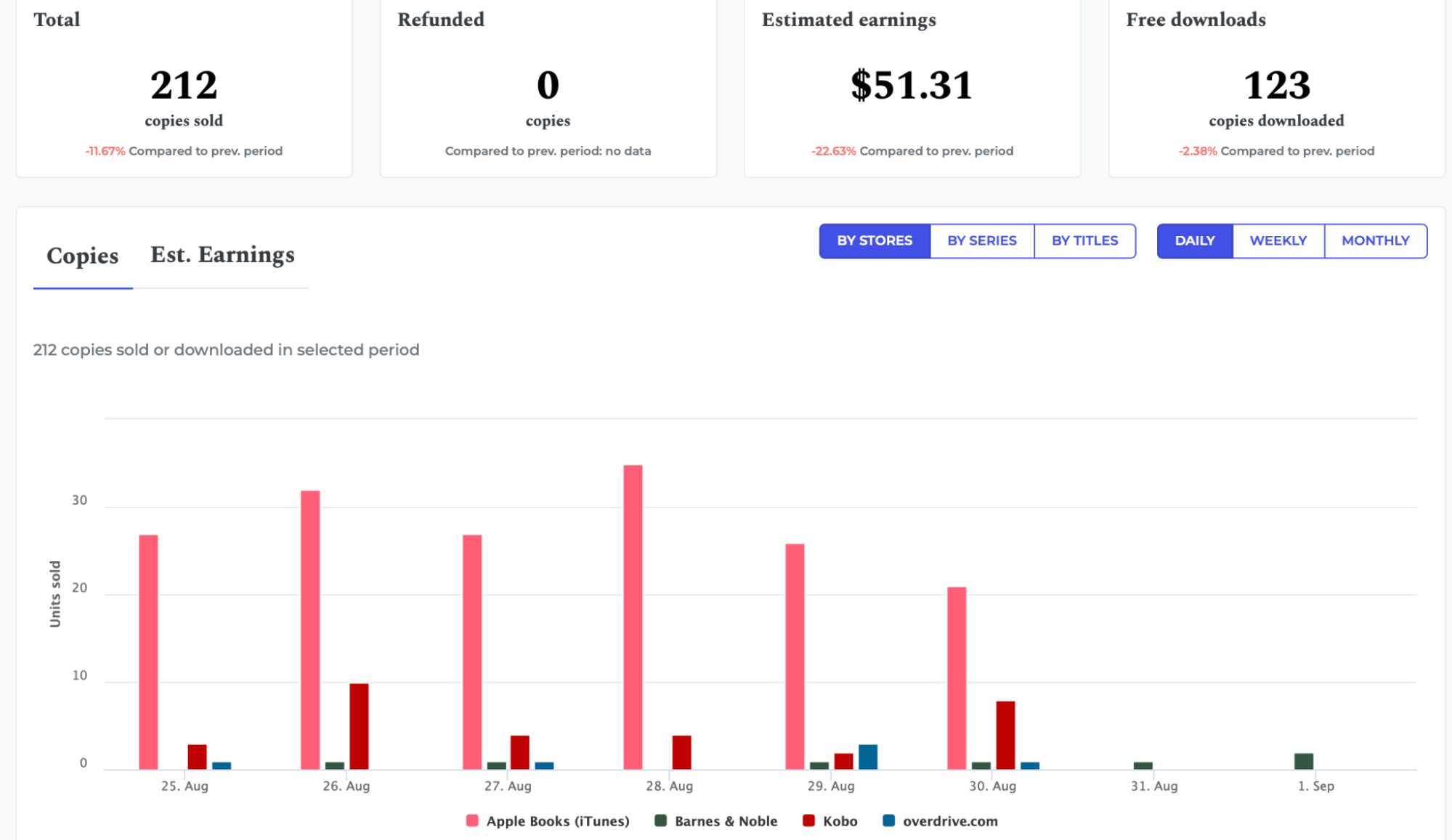
You can filter various aspects of your data, whether by date, sales type (free or paid), specific books or series, countries, or stores. This extends even to formats, allowing you to analyze sales and preorders.
You can examine your earnings, filtering them by stores or series and displaying the results daily, weekly, or monthly. You can also gain insights into the countries where you are making most of the sales, connecting with your readers in more targeted ways.
Final tips of trade
Tip #1: Consider publishing a series. It helps add more metadata and relevance to your name for online retailers like Amazon. On platforms like KDP, it helps to get more reads than one standalone. This tactic is used heavily in Romance (and those guys know how to sell).
Note: A series doesn’t mean your books have to be sequels. You can write five unrelated dark fantasy books but packaged together with a series name like Dark Fantasy to Read at Midnight.
Tip #2: When packaging your book for commercial readiness, pay extra care to metadata. Metadata is all information about your book. Set up accurate categories, a compelling cover design, the strongest hooks in your blurb, and pricing that makes the most sense. Doing so will rank your book higher, match you with the right audience, and help you stand out. (See our list of self-publishing resources for more help.)
Tip #3: Publish ebook, audiobook, and print-on-demand. This is how you maximize your selling potential by reaching different readers. Once you have your first manuscript, the hardest part is over. All you need to do is convert and format your original file to other formats. On PublishDrive, it takes a simple upload to publish and manage all three formats. Our most successful authors are using this multi-format strategy.
Tip #4: Distribute across digital channels. Along with digital formats from major retailers like Amazon, Google Play Books, and Apple Books, online libraries like Bibliotheca and subscription service platforms like Scribd and Dreame are soaring.
Tip #5: Sell outside of your home country. When you self-publish a book digitally, reaching global markets is easier. In 2020, 77% of digital book sales came from international markets. There is a growing demand for English-language content in countries like Chile, Norway, and Thailand. Take advantage of PublishDrive’s network of partners and access a global audience, including hard-to-get markets in China and India.
Tip #6: Find a co-author. Writing collaborations in the fantasy community is pretty popular. Authors are finding it beneficial to share the workload, combine audience reach, and market in rapid releases. From short stories to anthologies, see how indies are working together to publish more books.
Find Your Inner Monster. Share It With The World
Fantasy is a winning segment for self-publishers looking to run their gigs digitally. Narrowing your market to a more niche category like dark fantasy can turn out favorable. If you decide dark humor, bleak environments, and brutal consequences in a non-human world are the things for you, go for dark fantasy.
To conclude, a lovely quote:
Want to distribute your story in thousands of digital stores?